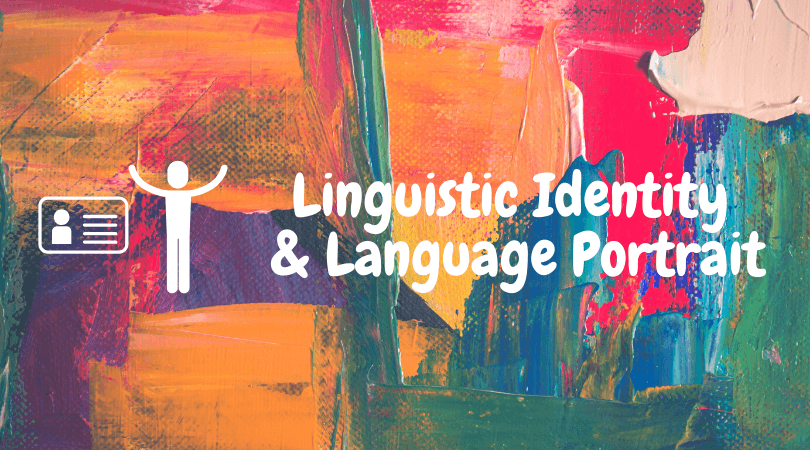There are different kinds of identities, social identities, national identities, racial identities, ethnic identities, etc. A notion, which is however not frequently talked about is “linguistic identity”.
What is linguistic identity then? Linguistic identity refers to a person’s identification as a speaker of one or more languages. The linguistic identity is part and often an important part of our identity. And this is especially true for multilingual individuals. It is influenced by different factors and usually contains aspects such as linguistic expertise, affiliation, and also familial inheritance [1].
There are different ways to explore what linguistic identity means to a person. And in today’s article we are going to introduce an interesting approach — the Language Portrait Silhouette. Language Portrait Silhouette (LPS) is a task, where people use different colors, shapes and symbols on a drawn silhouette of a body (Figure 1) to show their perceptions of their languages. This is combined with the drawers’ own verbal explaining and commenting on their portrait.
In language portraits, languages are often represented through the use of different colors and flags to show people’s expertise, attachment, affiliation and “liking” of a language. For example, the “liking” of a language is commonly expressed through the use of the drawer’s favorite color and the attachment with a language is represented through the use of the flag of a country where the language is spoken [2]. Languages are also aligned to concrete body parts to show people’s perceptions of different languages. While the head or brain often represent “knowing.”, hands, arms, and feet, being farther away from the head and used for gesturing, often represent “not knowing.” [3] You can find two examples of Language Portrait in Figure 2.

The exploration of linguistic identities through the use of LPS could be very meaningful in multilingual classrooms. On the one hand, it enables students to have a better understanding of their “linguistic self”, of their “linguistic identity” through self-analysis. On the other hand, it offers teachers an opportunity to acknowledge the identities of their students. Students are given chance to speak about all of their languages, even the most marginalized and invisible ones. They can get positive feedbacks and responses from multiple audiences like teachers and classmates. In this way, the value of their diverse languages and cultures are being recognized.
Feel interested? Draw your own Language Portrait Silhouette and explore your linguistic self!
References
[1] Leung C., Harris R, Rampton B. The idealized native speaker, reified ethnicities, and classroom realities. TESOL Quarterly. 1997; 31(3): 543–560.
[2] Lundell, Leea. “What is the color of English?” Representation of English in the language portraits of Sámi children. [Master’s thesis]. Finnland: University of Jyväskylä; 2010. https://pdfs.semanticscholar.org/26d9/cc77c4e8049c0f869fe18ff27f12683c4e82.pdf. Accessed January 30, 2020.
[3] Dressler R. Exploring Linguistic Identity in Young Multilingual Learners (In the Classroom). TESL Canada Journal. 2014; 32(1): 42-52.
 Written by ZHANG Zicheng, Study Visitor at the Terminology Coordination Unit of the European Parliament (Luxembourg). She comes from China and studies currently in the trilingual Master Program of Learning and Communication in Multilingual and Multicultural Context at the University of Luxembourg. She likes traveling and language learning.
Written by ZHANG Zicheng, Study Visitor at the Terminology Coordination Unit of the European Parliament (Luxembourg). She comes from China and studies currently in the trilingual Master Program of Learning and Communication in Multilingual and Multicultural Context at the University of Luxembourg. She likes traveling and language learning.


